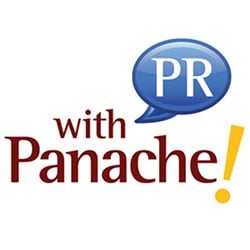Digital learning has limitless possibilities--get some inspiration from how these educators are using edtech tools in their classrooms
Digital learning tools are invaluable when they’re used by confident educators. In fact, when used appropriately, digital and mobile learning resources engage students–and they can even help boost achievement.
Online literacy platforms, virtual field trips, STEM simulations and modeling–these are just some of the tools that help elevate instruction in classrooms across the country.
Here, 16 educators share snapshots of the digital learning tools they’re using in their classrooms.
Our district has put student data at the forefront of many decisions we make, especially when considering our choices for curriculum or the need for. Last year, we implemented Schoolzilla by Renaissance, which allows educators to disaggregate student data and review multiple pieces of data side-by-side. The software breaks down our strengths and weaknesses in relation to our goals and gives us strategic direction on how to go about helping our students improve in specific areas. Using Schoolzilla and Star Assessments, an assessment suite that provides universal screening, we can strategize how to ensure students remain on a progressive track that leads to credit attainment as they go to ninth grade, which is ultimately a strong indicator of whether a student will graduate high school on time or not. These two tools allow us to understand how non-academic factors are impacting achievement and growth. More importantly, we can also see our student achievement through an equity lens.
By Leigh Anne Scherer, Assessment and Accountability Coordinator for North Clackamas School District, OR
In Leyden High School District 212, we’ve never mandated that our students graduate with a certain number of community service hours. We do know that community service hours are a strong indicator of a well-rounded student. We’ve made it a category that’s factored into which students earn our Excellence Award—along with good attendance, low disciplinary numbers, a benchmark GPA, and other factors. These are all strong indicators that a student will graduate high school college- and career-ready. We also believe in the impact global service can have on students and on the world. Now, if students complete certain levels of community service, they’re eligible to go on a global service trip that’s substantially funded by our local School Board. When we started that program years ago, we managed hours on a Google Sheet with an employee at each school managing it, which proved to be labor intensive. Now, we use Transeo, a digital tool that helps us track and report students’ community service achievements. This method gives students and coaches more ownership over their community service opportunities, which is fantastic since the state of Illinois is designating community service as a qualifier for being college- and career-ready.
By Nick Polyak, Superintendent, Leyden High School District 212, IL
When the district I work in announced our transition to a phonics-based literacy approach using a new reading program two years ago, I was a little skeptical. Gradually moving toward a blended learning environment for teaching reading meant we had to trust a program to deliver effective lessons that meshed well with teacher support. We all went into training with some concerns. Some of my students with reading disabilities came to my class reading 35 words a minute. Without adequate progress, they’re liable to feel defeated and believe that their inability to read is just part of their school experience. During the first year using the new program, Reading Horizons Discovery, the students and I were actively learning it together. In that time, I grew confident with the program and saw student progress I’d never seen before. To see them smile and get to 90 words a minute made my year. We usually start with a whole-group lesson. I like to get my students standing up and working around the room before they log in to their computers for a lesson. During this time, I use my assessment data to pull students aside for individual lessons based on who didn’t pass the last lesson or who needs more support. The computer component allows me to identify what my students understand and what they don’t so that I can provide help where they need it. While the computer components of my class are beneficial for both myself and my students, walking through activities face-to-face with students is still crucial.
By Melissa Cassada, Special Education Teacher at Lewison Elementary School, Evans, GA
Read more...

